(Image Credit: Louisville Black Creatives – Facebook.com)
Juneteenth marks the day when General Gordon Granger of the Union Army strolled into Galveston, Texas on June 19, 1865, to announce that the last of the 250,000 remaining enslaved people in the Confederacy were freed from the shackles of slavery, two years after the Emancipation Proclamation.
To celebrate Juneteenth, this week’s blogpost is dedicated to African Americans artisans, both past and present, who use their creativity to tell stories through the art of quilting. We will also highlight African American quilters and artisans who, through textiles and handcraftsmanship, are modern-day griots, these creatives are continuing the tradition of African tribal storytelling to preserve the genealogies and oral traditions of their culture.
Fashion has always held an important role in the evolution of mankind, whether to express status or as a vehicle for social change. But the art and craft of fashion, specifically quilting, has held an even deeper meaning for the African American community and is as almost as old as the history of America.
One of the first enslaved African women to be officially recorded in the colony of Virginia in 1619 was Angela (likely born in present-day Angola). Angela is considered one the ‘First Africans” and like many Black women to follow, were charged with spinning, weaving, sewing, and quilting on plantations for their enslavers, while often weaving their own family’s clothing to keep warm and survive.
Over time, some African American household slaves became highly skilled in creating quilts and while very few examples of these early quilts survived due to the heavy wear they received, what was initially a tool of oppression became an expression of liberation.

Hidden in Plain View by Jacqueline L. Tobin and Raymond G. Dobard
UNDERGROUND RAILROAD QUILT CODES
The Underground Railroad (UCRR) was a network of people and places that assisted southern slaves escape to free states in the North and Canada prior to the start of the Civil War in 1861. According to legend, a safe house along the UCRR was often indicated by a quilt hanging from a clothesline or windowsill. These quilts were embedded with a kind of code, so that by reading the shapes and motifs sewn into the design, an enslaved person on the run could know the area’s immediate dangers or even where to head next.
In the book entitled, Hidden in Plain View: A Secret Story of Quilts and the Underground Railroad, the authors reveal how enslaved men and women made encoded quilts and then used them to navigate their escape on the Underground Railroad. Quilts with patterns named “the Charleston Code,” “wagon wheel,” “tumbling blocks,” and “bear’s paw”, contained secret messages that helped direct slaves to freedom.
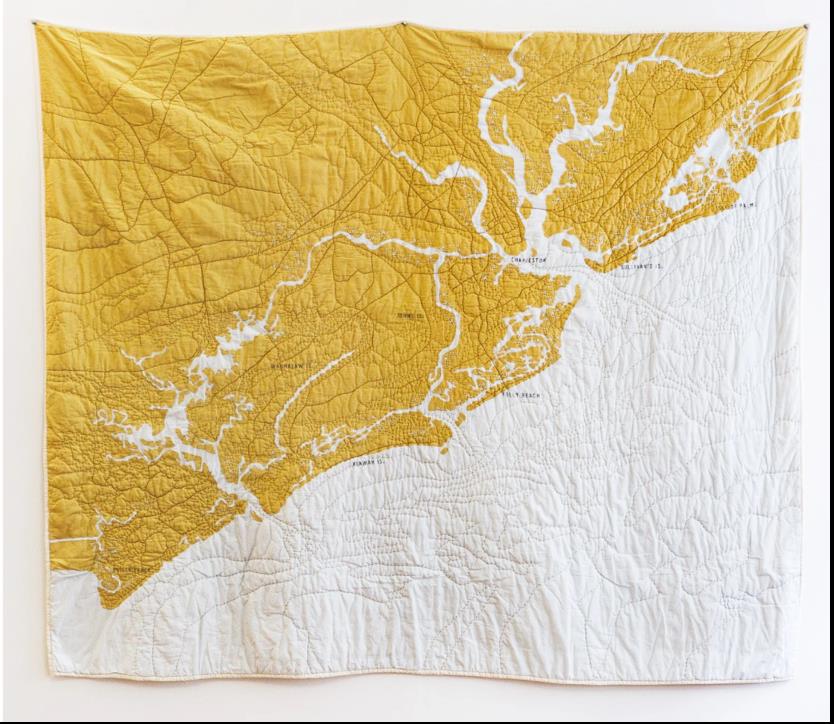
Example of a Charleston Code Quilt – helped navigate slaves to freedom via the Underground Railroad
When slaves made their escape, they used their memory of the quilts as a mnemonic device to guide them safely along their journey. For example: a bow tie meant “dress in disguise to appear of a higher status; a bear paw was an instruction to “follow an animal trail through the mountains to find water and food; and a log cabin warned “seek shelter now, the people here are safe to speak with”.

Example of a Log Cabin quilt with an embedded code to help slaves to freedom.
At the end of the Civil War, African American women continued telling their stories through quilting, maintaining the long-standing cultural significance and its profound roots of ‘woven’ resistance. For more on the history of African American quilting as folk-art visit: http://www.womenfolk.com/quilting_history/afam.html
HARRIET POWERS

Harriet Powers 1837-1910 (Image credit: Museum of Fine Arts Boston)
Born into slavery in Athens, Georgia in 1837, Harriet Powers created quilts once she was emancipated. She used quilting as a catalyst for change and to inspire conversations about race. Her storytelling quilts made use of appliqué techniques and the textiles of Western Africa and are notable for her ability to transmit, through the fabric, her religious faith depicting biblical stories, local events, and celestial occurrences. Powers debuted her first exhibit in 1886 at the Cotton States and International Expo.
For much of the 20th century Powers was erased from the art historical canon, but today she is deservedly considered one of the most accomplished quilt makers of the 19th century.
Only two of Powers’ story quilts have survived: the Bible Quilt which hangs in the Smithsonian Institution and her Pictorial Quilt which is on display at the Museum of Fine Arts in Boston.

Harriet Powers – Bible Quilt circa 1886 (Image credit: Smithsonian Institution)
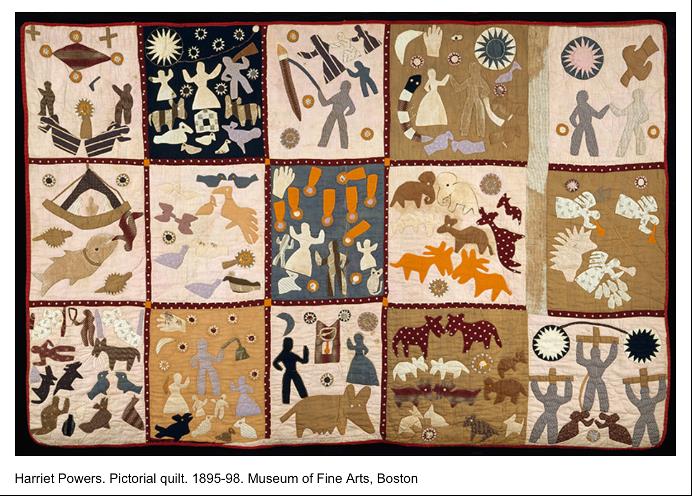
Weaving scraps together became a metaphor for threads of resilience stitched together to preserve remnants of culture, faith, and hope in the African American community. Though often not attributed with bringing the tradition of quilting to the U.S., Black women are among the originators of today’s needle and thread technique.
From navigating the Underground Railroad to telling a family’s story, quilts are more than an heirloom to African American families—they are an act of woven resistance.
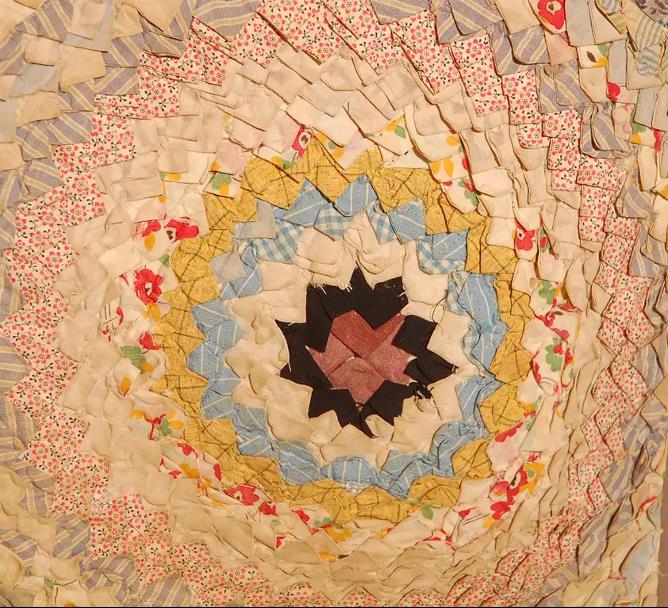
Close-up of African American ‘Pine Burr’ quilt circa 1920 found in Selma, Alabama. For sale on 1st Dibs $7,500
One of the most beautiful quilt patterns is the Pine Cone or Pine Burr, which is a three dimensional quilt made of overlapping triangles. These triangles are put in a circular pattern starting at the center, giving the look of a pinecone. The quilt pictured above was made by an African American of unknown provenance. It took weeks to make and was found in Selma, Alabama circa 1920. It is for sale on 1st Dibs for $7,500.
QUILTERS OF GEE’S BEND
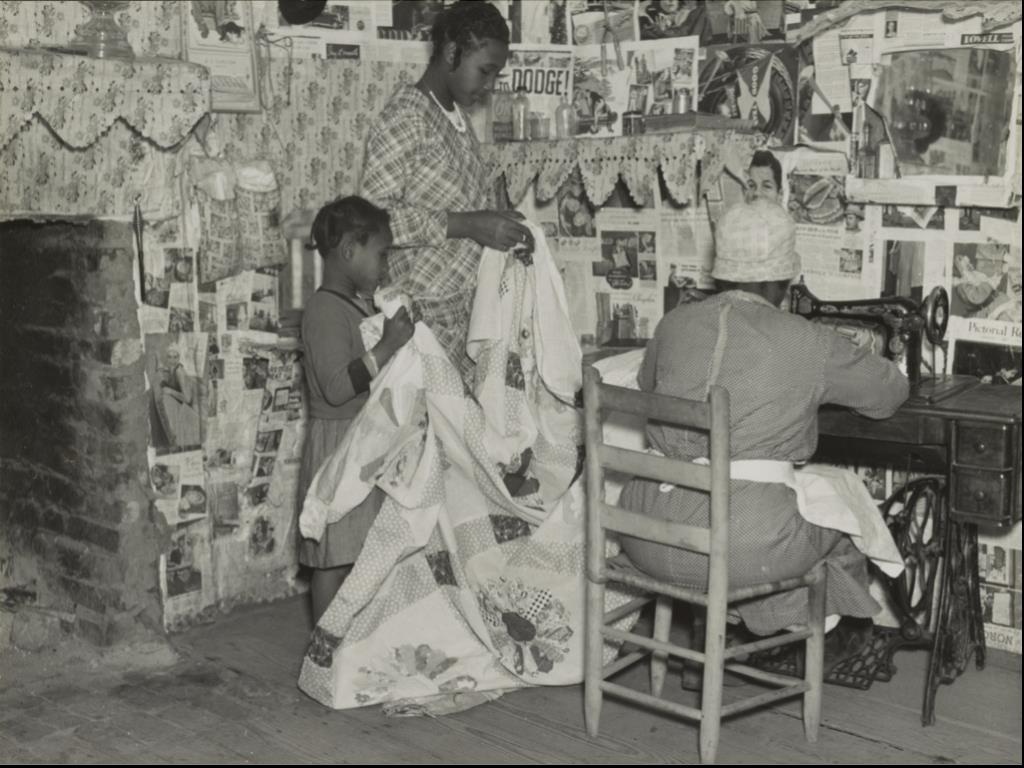
Gee’s Bend Quilters Jennie Pettway and Jorena Pettway, 1937 (Photo credit: Arthur Rothstein).
Among the most important quilt contributions to the history of art were made by quilters in the isolated African American hamlet of Gee’s Bend, Alabama in the 1930s. Gee’s Bend quilters developed a distinctive style and are known for their lively improvisations and geometric simplicity.
In 2003, 50 quilt makers founded the Gee’s Bend Collective, which is owned and operated by the women of Gee’s Bend and their work has been exhibited in museums across the country, the most notable in 2004 at the Whitney Museum of American Art.
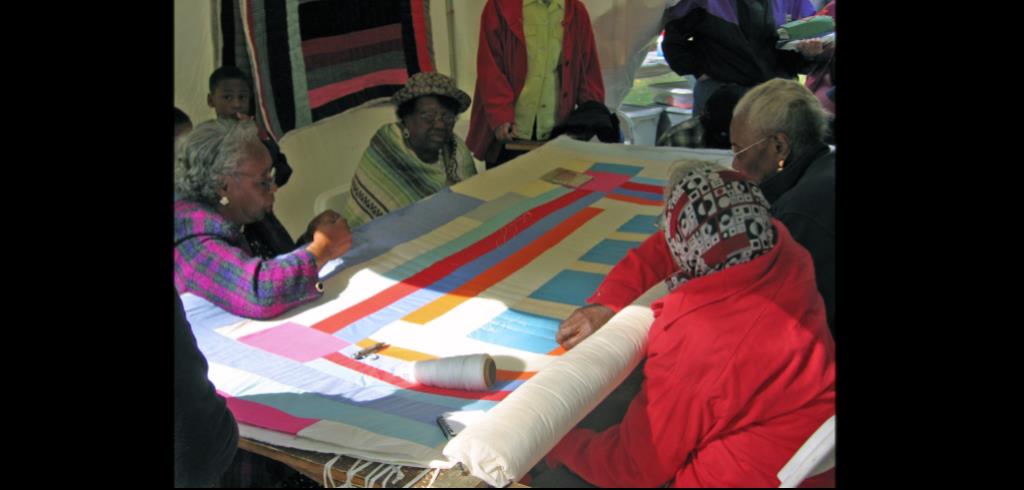
Gee’s Bend quilters working a quilt 2005 (Photo credit: Wikipedia.com)
In 2015, Gee’s Bend quilters Mary Lee Bendolph, Lucy Mingo, and Loretta Pettway were joint recipients of a National Heritage Fellowship awarded by the National Endowment for the Arts, which is the United States government’s highest honor in the folk and traditional arts.
And in 2023, the Gee’s Bend quilters collaborated with generative artist Anna Lucia to create digital works of art on the blockchain in a project called Generations.
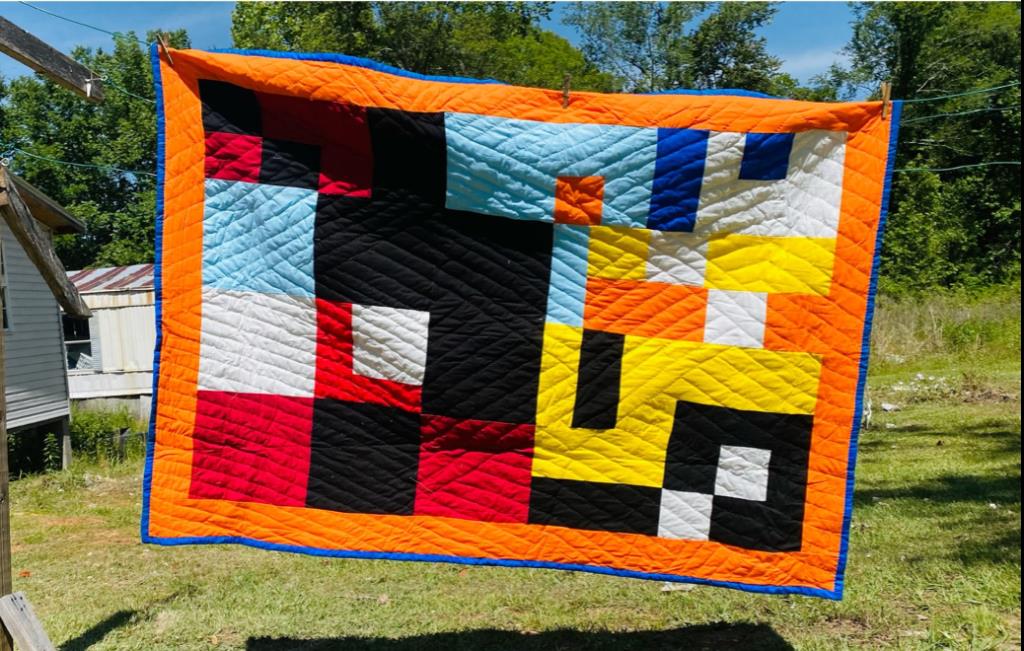
Quilt by Anna Lucia of Gees Bend Quilted physical NFT on a clothesline in Alabama 2023 (Image credit: rightclicksave.com)
FAITH RINGGOLD
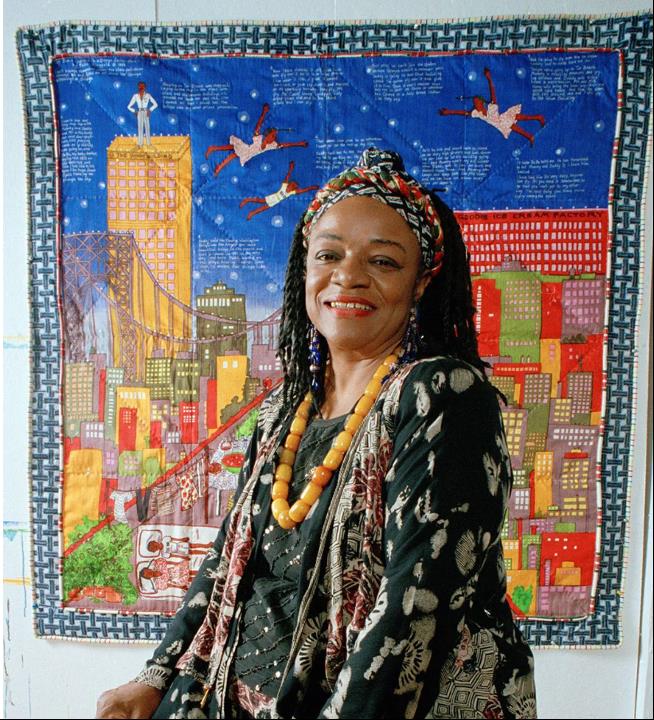
Faith Ringgold in front of her quilt Tar Beach 1993 (Image credit: Wikipedia.com)
Faith Ringgold is an artist, activist, quilter, educator and author of numerous award-winning children’s books. Tar Beach, her first children’s book, based on a quilt of the same title, has won over twenty awards including the Caldecott Honor and the Coretta Scott King award for the best-illustrated children’s book of 1991. Ringgold has made a career-spanning commitment to social justice and equity through a variety of media including oil paintings, tankas, soft sculptures, story quilts and prints. If you are in LA, be sure to catch her show at the Jeffrey Deitch Gallery from May 20-August 12.
BISA BUTLER
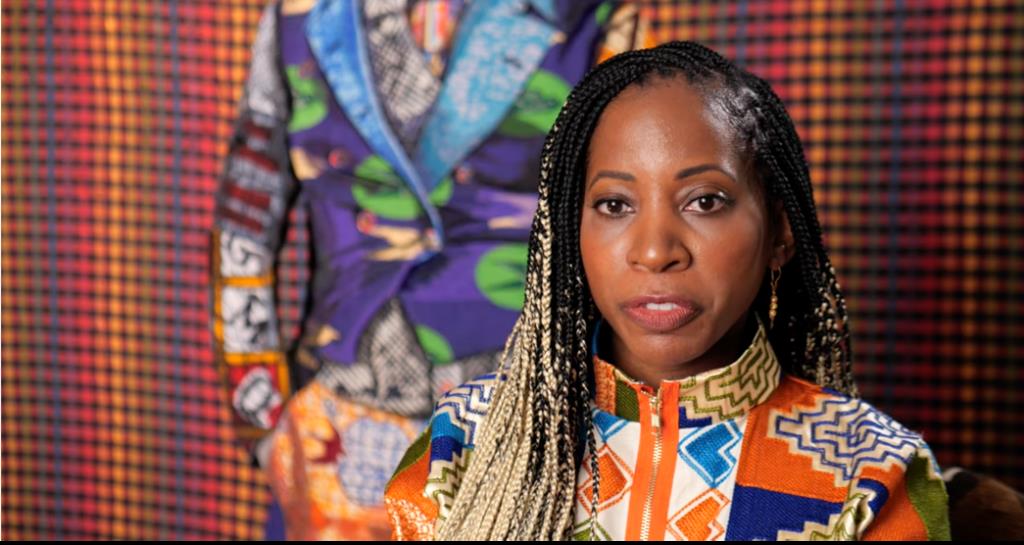
Artist/quilter Bisa Butler – Quilting for the Culture (Image credit & video: https://www.youtube.com/watch?v=_P3_61nh3xo)
Bisa Butler has been called a modern-day Griot, but instead of using words to tell stories, she uses stitches and cloth. Her quilts have graced the covers of magazines, have been the subject of numerous exhibitions and she created the striking illustration for the book “Unbound,” the memoir of activist and Me Too movement founder Tarana Burke. Her show entitled “Bisa Butler: The World is Yours“, is currently showing in NYC from May 6 to June 30, 2023 at 18 Wooster Street. You will be dazzled! Here’s a link to the show info: https://deitch.com/new-york/exhibitions/bisa-butler-the-world-is-yours
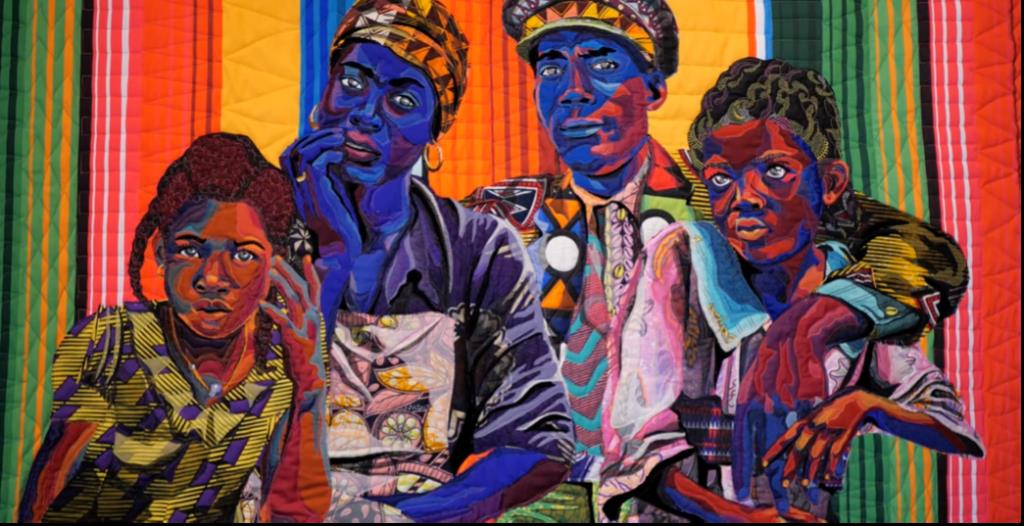
Artist/Quilter Bisa Butler (Image credit: YouTube)
“In my work, I am telling the story— this African American side— of the American life. History is the story of men and women, but the narrative is controlled by those who hold the pen. My community has been marginalized for hundreds of years. While we have been right beside our white counterparts experiencing and creating history, our contributions and perspectives have been ignored, unrecorded, and lost. It is only a few years ago that it was acknowledged that the White House was built by slaves. Right there in the seat of power of our country African Americans were creating and contributing while their names were lost to history. My subjects are African Americans from ordinary walks of life who may have sat for a formal family portrait or may have been documented by a passing photographer. Like the builders of the White House, they have no names or captions to tell us who they were.” ~ Bisa Butler
AFRICAN AMERICAN CRAFT INITIATIVE

The African American Craft Initiative – a division of the Smithsonian Artisan Initiative (Photo credit folklife.si.edu)
The African American Craft (AACI) Initiative works to expand the visibility of African American artisans and ensure equitable access to resources. Established through a consultative dialogue process with African American makers and organizations, and the mainstream craft sector in the United States, AACI outlines concrete actions for sustainable change.
Through collaborative research, documentation, and public programming, the initiative builds upon the relationship between craft and community by amplifying and supporting the efforts of African American makers to sustain their craft practice.
QUILTING & THE FASHION INDUSTRY
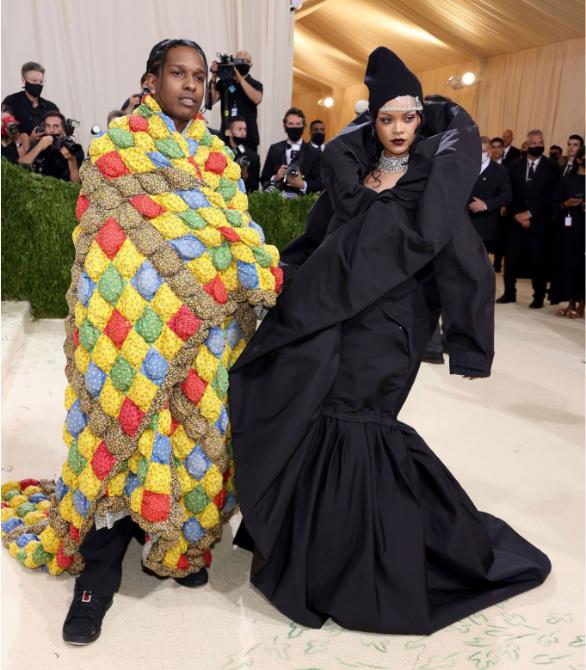
A$AP Rocky and Rihanna at the Met Gala 2021 (Image credit: GraziaMagazine.com)
Quilting continues to provoke conversations and contemplations around identity, heritage, and healing within the African American Community. African textiles are often central to quilters and fashion designers at large.
To learn more about African textiles check out these UoF lessons:

UoF-West African Textiles Lessons
To learn more about quilting and various quilt patterns visit Quilt Index https://quiltindex.org
To find out where to purchase African fabrics visit: https://www.quiltafricafabrics.com/collections
Have you viewed our West African textiles lessons yet?
-------------------------------------
By: Francesca Sterlacci
Title: JUNETEENTH: Celebrating African American Quilters & Creatives
Sourced From: www.universityoffashion.com/blog/juneteenth-celebrating-african-american-quilters-creatives/
Published Date: Sun, 18 Jun 2023 23:00:25 +0000
Read More
Did you miss our previous article...
https://edmmusic.news/fashion-clothing/fashions-resort-2024-collections-a-gateway-to-style
 FestivalsMusicNew ReleasesArtistsFashion & ClothingVideosPrivacy PolicyTerms And Conditions
FestivalsMusicNew ReleasesArtistsFashion & ClothingVideosPrivacy PolicyTerms And Conditions
